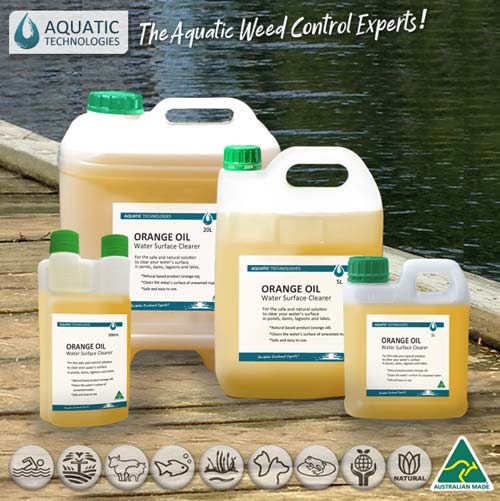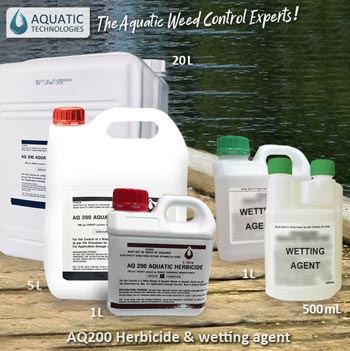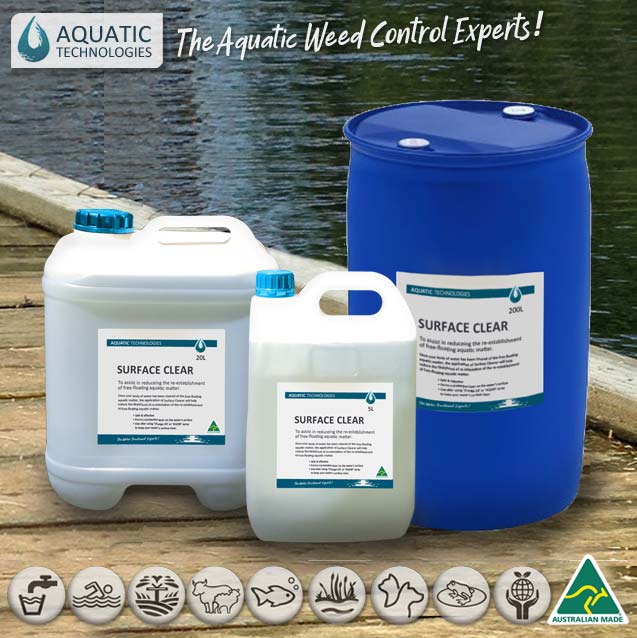Floating Aquatic Weeds
Floating Aquatic Weeds
Click below to find the right solution for your water quality needs

Natural Control
Click HereNatural Control

Herbicide
Click HereHerbicide

Preventative
Click HerePreventative

Weed Harvesting Tools
Click HereWeed Harvesting Tools
How to identify free-floating aquatic weeds
Free-floating aquatic weeds have roots that are not attached to substrate that float on the water’s surface and are usually very small. They can appear anywhere across the surface of the waterbody, and in some instances, will completely cover the entire surface.
How to control free-floating aquatic weeds
Weeds like Duckweed, Azolla and Salvinia can be difficult to get rid of due to their rapid growth rate under the right conditions. Depending on how serious your infestation is, treatments will vary. Small infestations will be easier to manage, whilst large ones require added effort to tame the growth.
Smaller infestations of aquatic weeds benefit from spray treatments. If the problem is larger, both sprays and physical removal of the weeds are required
Effective methods of treatment can vary depending on the level of infestation. Treatments are most effective when the infestations are smaller rather than advanced. A ‘large’ infestation is usually when the weeds are covering 90-100% of the water surface.
How to identify free-floating aquatic weeds
Rooted-floating plants have underground stems (rhizomes) from which new plants can sprout and are commonly attached to the substrate, lakebed or floor of the water body. They are generally found in the shallower water around edges. Their stems, leaves or flowers may or may not protrude above the water’s surface
How to control free-floating aquatic weeds
Floating attached aquatic weeds can be controlled by physical removal and aquatic herbicide.
Aquatic herbicide AQ200 must be applied with our wetting agent to effectively treat floating attached aquatic weeds.
There are three common types of free-floating aquatic weeds
- “Duckweed” Lemna spp., Wolffia spp., or Spirodela spp.
Duckweed is a highly common free-floating aquatic weed. Very small in size with its leaves spanning just 1mm to 1cm, Duckweed often appears as a green cover on the surface of the water. A clear indication of nutrient-enriched water conditions, Duckweed grows fast in water that’s slow-moving or stationary.
Did you know?If Duckweed goes untreated, it can literally double in numbers within five to seven days.
2.”Azolla” Pacific Azolla or Ferny Azolla
Another common free-floating aquatic weed, its leaves span from 1cm to 2.5cm in diameter. Appearing primarily in a green shade and often turning red in the late afternoon and in strong sunlight, Azolla can have leaf structure similar to that of a common fern. Its roots reach below the water’s surface and if not treated, can double in size in just seven days.Azolla filiculoides “Azolla”
3. Salvinia
This free-floating aquatic plant is declared as a noxious aquatic weed in all Australian states. With leaflets of up to 3cm wide and total size of up to 20cm long, Salvinia is covered in small ‘hairs’ that repel water and keep it from sinking. This harmful aquatic weed is capable of ‘choking’ a body of water and causing real damage. Potentially doubling its size in just five days under the right conditions, Salvinia can kill fish and quickly deteriorate your water quality if untreated.

